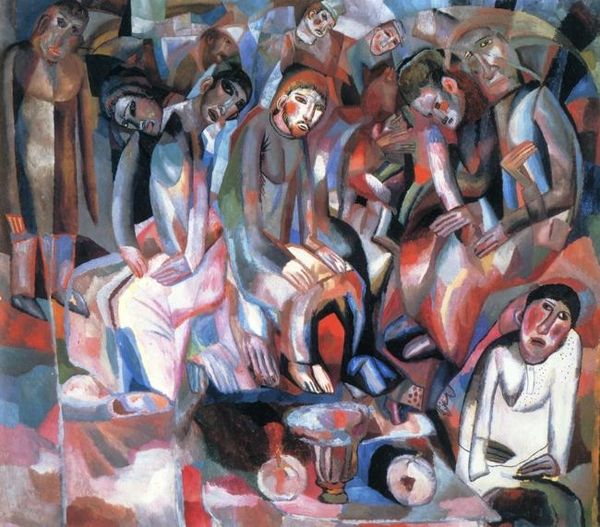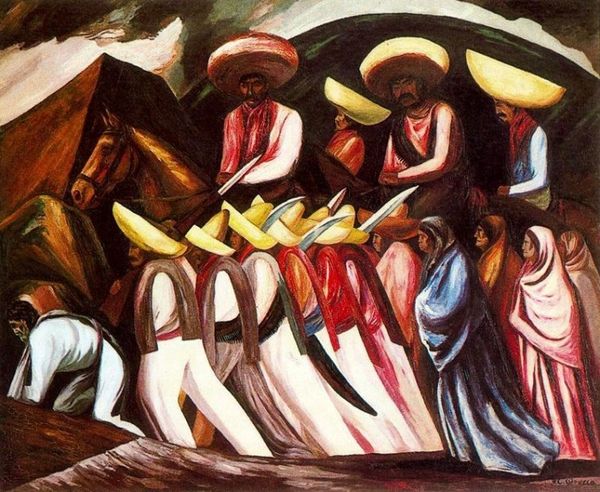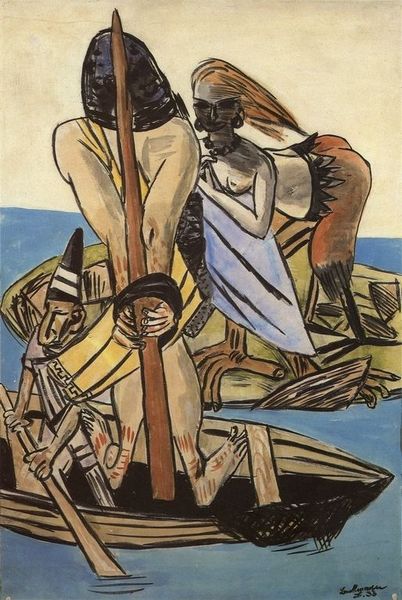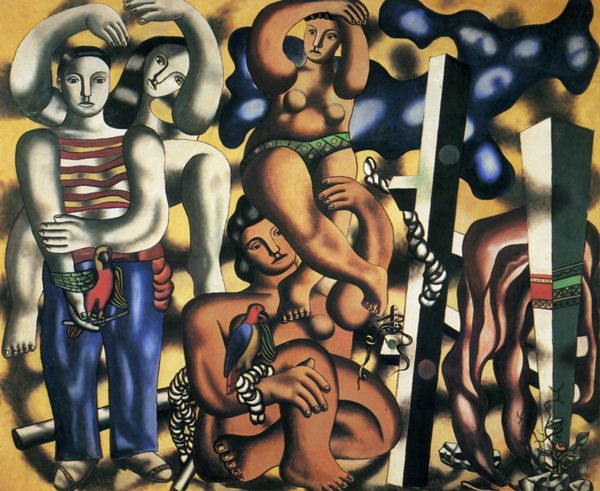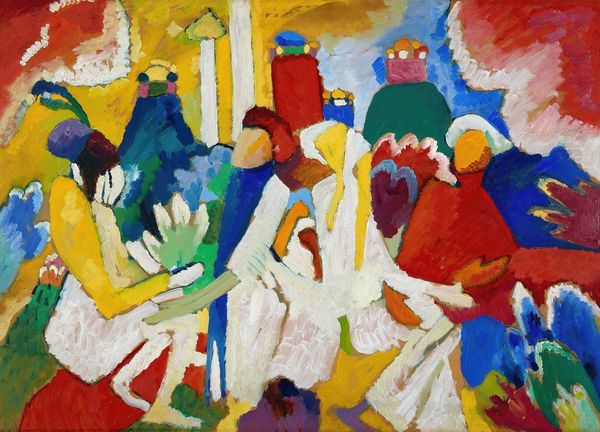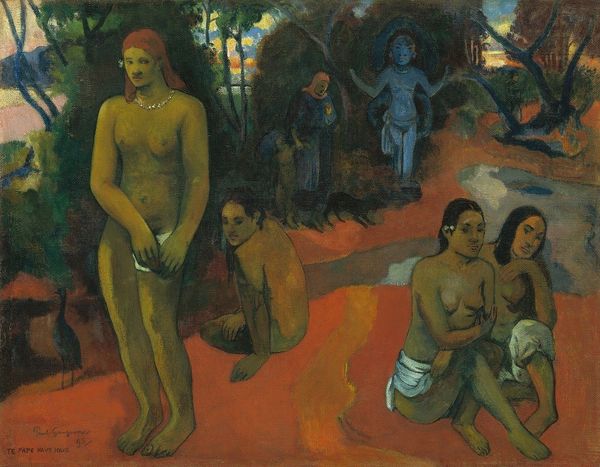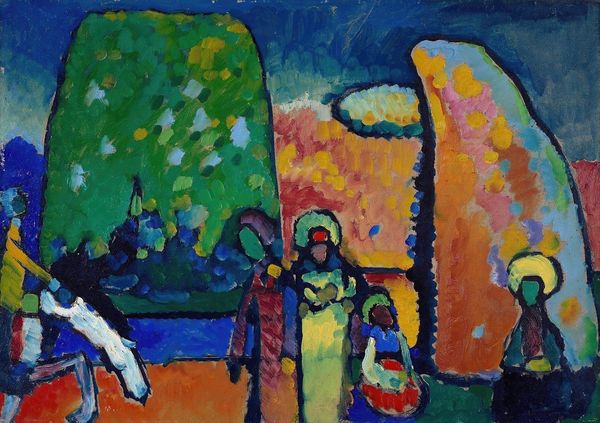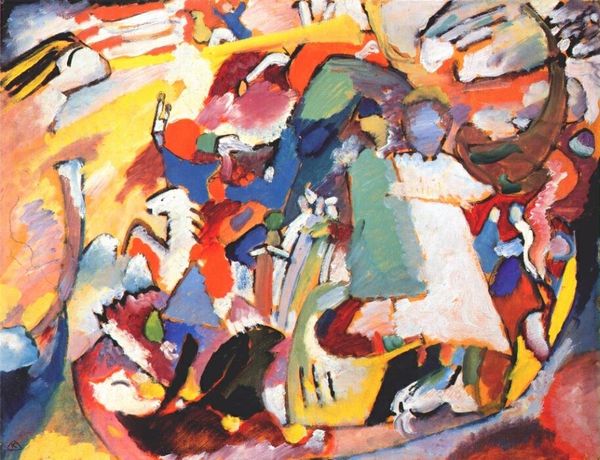
painting, oil-paint, impasto
#
painting
#
oil-paint
#
landscape
#
rayonism
#
figuration
#
oil painting
#
impasto
#
expressionism
#
russian-avant-garde
#
genre-painting
#
portrait art
#
expressionist
Copyright: Public domain US
Curator: Welcome. We're looking at "Planting Potatoes," an oil painting completed in 1909 by Natalia Goncharova, a key figure in the Russian avant-garde movement. Editor: It’s strikingly powerful. The bold strokes and earthy tones give it an almost raw, elemental feel. The figures, though engaged in labor, possess an undeniable strength. There's nothing dainty or idealized about them. Curator: Indeed. Goncharova was interested in moving away from academic art traditions and embracing a more modern, direct approach to representing Russian peasant life. The impasto technique she employs, with the thick application of paint, contributes to the painting’s textured and somewhat primitivist aesthetic. Editor: And the bare feet firmly planted on the earth, the slightly abstracted forms… it all feels deliberate. It's less about a literal depiction and more about capturing the essence of labor, the connection to the land, and perhaps even the dignity in it. Are there broader socio-political implications here? Curator: Absolutely. Remember that this was a period of immense social and political upheaval in Russia, not long before the Revolution. There was a growing interest among artists in representing the lives and struggles of ordinary people, and to challenge the established artistic norms that catered to the elite. The very act of painting peasants as monumental figures was a political statement. Editor: It's a refreshing break from idealized depictions. The choice of these stark colours seems also a visual echo of their connection to the soil and how they interact with it to draw sustenance from it. The labour doesn’t appear romanticized at all; rather, it is imbued with weight. Curator: The art world, then, became a crucial site for negotiating these evolving notions of national identity, the role of the peasantry, and the direction Russian society should take. Goncharova really seized that chance. Editor: This painting stands as a testament to Goncharova’s artistic bravery. It’s powerful to see those aspects represented here in a monumental form, in which those bodies are not to be othered, or exoticized, but empowered instead. Curator: Well, hopefully our discussion offered fresh perspectives. Thank you for joining us in appreciating this seminal work from the Russian avant-garde. Editor: Indeed, there is an immediacy in viewing art that confronts societal expectations. Hopefully, this artwork's effect lasts beyond our momentary viewing.
Comments
No comments
Be the first to comment and join the conversation on the ultimate creative platform.
